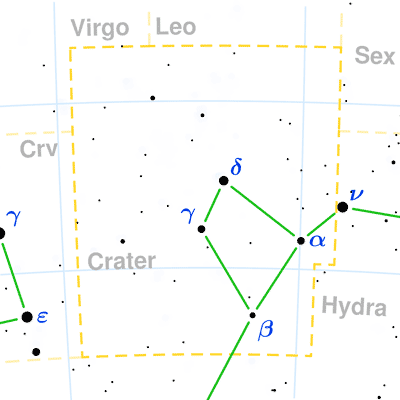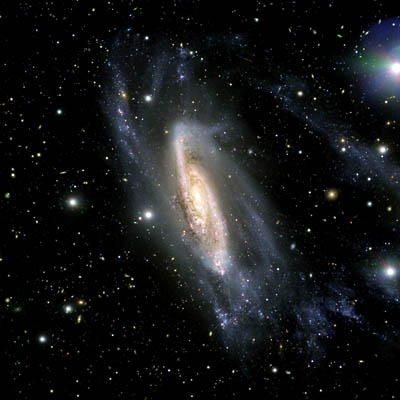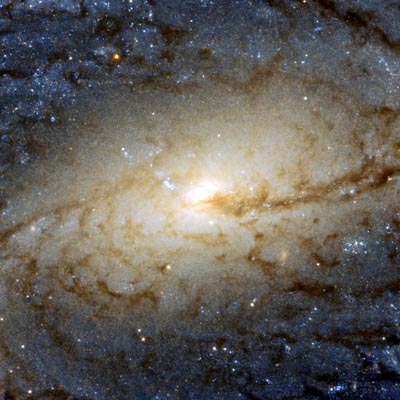Pronunciation:
(KRAY-ter)Abbreviation:
CrtGenitive:
CraterisRight Ascension:
11 hoursDeclination:
-15 degreesArea in Square Degrees:
282Crosses Meridian:
9 PM, April 25Visible Between Latitudes:
65 and -90 degreesThe constellation Crater, the cup, is located in the southern hemisphere of the sky. It can best be seen in the northern hemisphere in April and is completely visible at latitudes between 65 degrees and -90 degrees. It is a small constellation covering an area of 282 square degrees. It ranks 53rd in size among the 88 constellations in the night sky. It is bordered by the constellations Corvus, Hydra, Leo, Sextans, and Virgo. The shape of this constellation does indeed resemble a cup.
Crater is one of the 48 constellations identified by the Greek astronomer Ptolemy in the second century. Its name means “the cup” in Latin. It represents the goblet of the Greek god Apollo and is usually depicted as a two-handed chalice. It is associated with the story of Apollo and his sacred bird, the crow, represented by the constellation Corvus. In the story, Apollo sends the crow to fetch some water with the cup. The crow gets distracted by a fig tree and spends a few days waiting for the figs to ripen. He finally brings the water-filled cup to Apollo along with a water snake as an excuse for being late. Apollo sees through his lies and in a fit of anger casts all three, the cup, the crow, and the snake, into the sky to become the constellations Crater, Corvus, and Hydra.

points of interest below © Sea and Sky

© Torsten Bronger CC BY-SA 3.0
Alkes
Gamma Crateris
Al Sharas
Theta Crateris
Zeta Crateris
Epsilon Crateris
Eta Crateris
"The Cup"
N/A
"The Rib"
N/A
N/A
N/A
N/A
Orange Giant Star
Double Star
Blue-White Subgiant Star
Blue-White Dwarf Star
Yellow Giant Star
Orange Giant Star
Giant Star
4.07
4.08
4.48
4.68
4.72
4.82
5.17
Crater is a dim constellation with only one star brighter than magnitude 4. The brightest star is Labrum with a visual magnitude of 3.56. It is an orange giant star located about 196 light years from Earth. The second brightest star is Alkes with a magnitude of only 4.07. It is also an orange giant star that lies approximately 174 light years away. Gamma Crateris is the third brightest star with a magnitude of 4.08. It is a double star system that can easily be separated in a small telescope. It is located approximately 84 light years from our solar system.
Crater contains no Messier objects. It does, however, contain a number of extremely dim and distant galaxies than can only be seen in large telescopes. One object of particular interest is known as Crater 2. It is a dwarf galaxy that was only recently discovered to be orbiting our own Milky Way galaxy. It is located approximately 380,000 light years from our solar system. It wasn’t discovered until 2016 because its stars are spread out from one another, earning it the nickname “the Feeble Giant.” Other deep-sky objects in this constellation include a spiral galaxy known as NGC 3981 and another spiral galaxy called NGS 3887.

© European Southern Observatory / CC BY 4.0

© ESA/Hubble & NASA, P Erwin et al / CC BY 4.0



